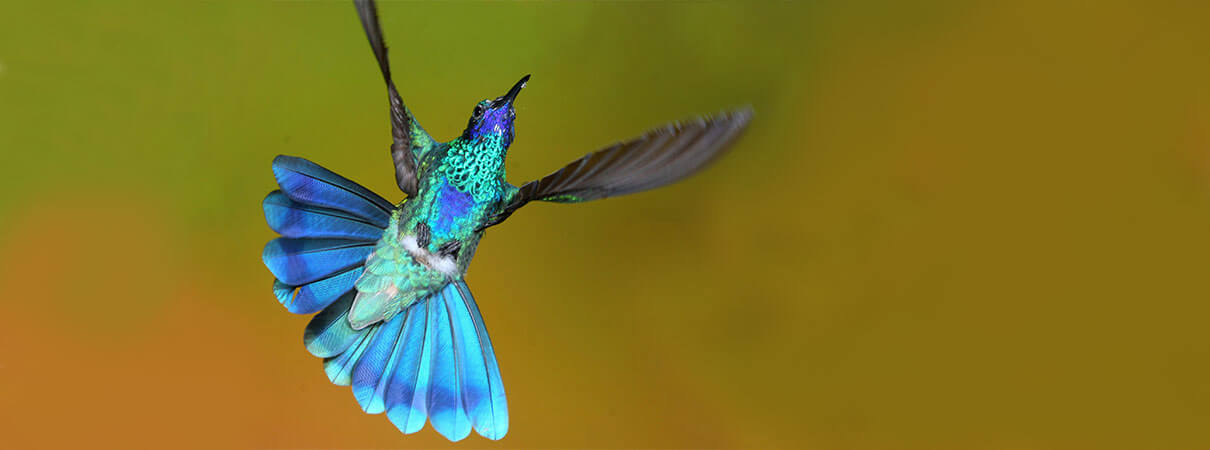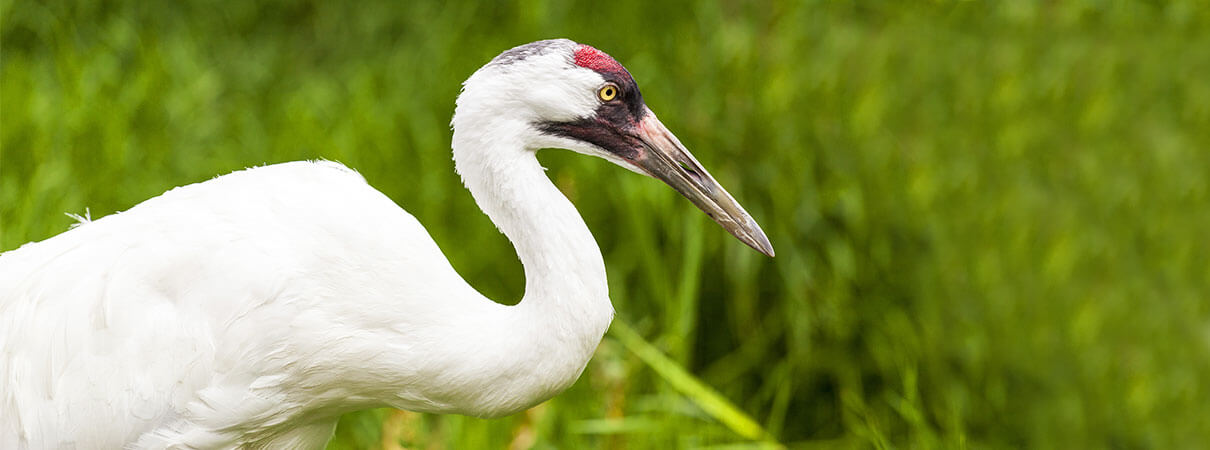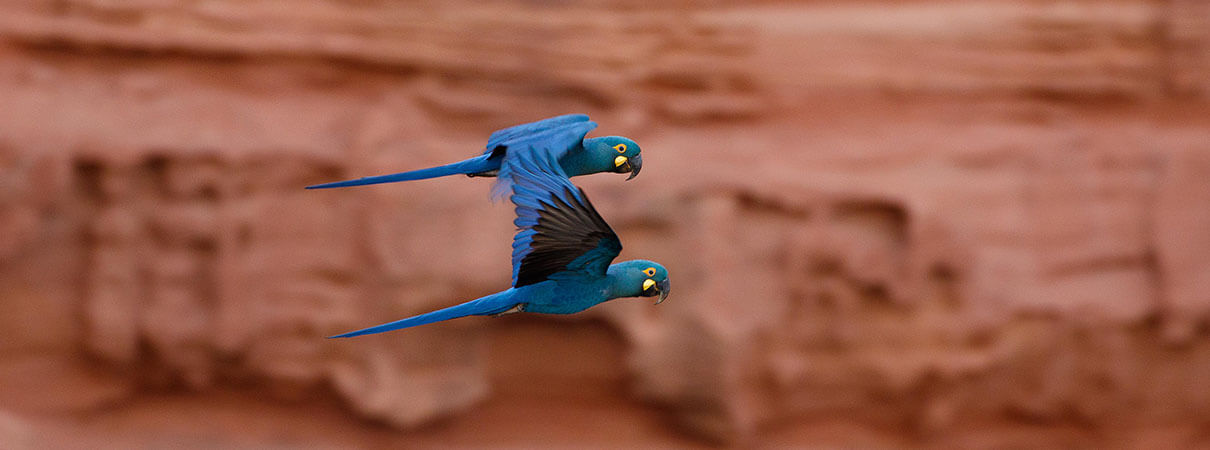Bird News Roundup: Week of 1/14/19
Still catching up from the holidays and New Years? Take a break with our latest roundup of notable bird and bird conservation news. We've got updates about some of your favorite species, from Whooping Crane to Lear's Macaw.

Sparkling Violetears have "strongly serrated bill edges and dagger-like tips." Photo by Larry Thompson
1. “Feisty hummingbirds prioritize fencing over feeding,” Science Daily
Hummingbirds are more complicated than we thought. Their straw-like bills are great for sipping nectar. But some males of tropical species, including the Sparkling Violetear, have "traded efficient feeding for bills that are better at stabbing and plucking other hummingbirds," according to new research. These birds have both fight and flight! Take a tour of tropical hummingbirds in ABC's Bird Reserve Network, or read more in Science Daily and watch high-speed footage of the hummers in action.
2. "World's rarest bird” sighted in Brazil, American Bird Conservancy
A lone Stresemann's Bristlefront, almost certainly the world's rarest bird species, was sighted in Brazil after months of searching by ABC partners. This glimpse of a female bird reconfirms the species' existence and renews hope that these birds aren't lost for good. ABC's Vice President of Threatened Species, Daniel Lebbin, says, “ABC and our partners across the hemisphere are working hard to conserve this and other bird species on the brink of extinction.” Click through to see photos and hear audio of the bird.
Inspired to help the rarest bird in the world? Give today!

Whooping Cranes will be captive-bred at a Smithsonian facility in Front Royal, Va. Photo by GTS Productions/Shutterstock
3. “Whooping crane breeding program to begin at Smithsonian facility,” The Washington Post
Whooping Cranes relied on the Patuxent Wildlife Research Center breeding program for decades due to their small population (fewer than 900 individuals) in the wild. The captive-rearing program bred and raised chicks before releasing them to give the endangered species a better chance at survival. In November 2018, the end of the program was announced. Now, the Smithsonian Conservation Biology Institute has stepped in and will continue these efforts. Learn more about this exciting conservation project.
4. “Chile starts implementing ban on plastic bags,” National Public Radio
We're pleased to hear that Chile is banning plastic bags, with full implementation planned by August 2020. (The country joins Kenya in this effort, which made a similar commitment last year.) Hannah Nevins, ABC's Seabird Program Director, says, “Plastic leaves a lasting legacy in our oceans, affecting birds, sea turtles, and marine mammals. Every albatross species has been documented ingesting plastic — not only plastic films, but also bottle tops, plastic toys, and fragments of consumer goods. This new law in Chile is a step in the right direction for seabirds and our planet.” Listen to the NPR story or read more from Nevins about how plastic affects seabirds.
Inspired to help seabirds? Take action!

Lear's Macaw. Photo by Maggie Forester
5. “Ten birds that came back from the brink of extinction,” Insider
Can we prevent extinctions? Absolutely. ABC and partners have helped bring species like the Lear's Macaw and the Yellow-eared Parrot back from the brink. As Amy Upgren, ABC's Alliance for Zero Extinction Program Officer, says, "Even when population numbers are critically low, we won't give up on saving birds." Learn more about ten birds that are back from the brink in an article by Insider, or read about five "lost birds" that were rediscovered in the past five years.


















































